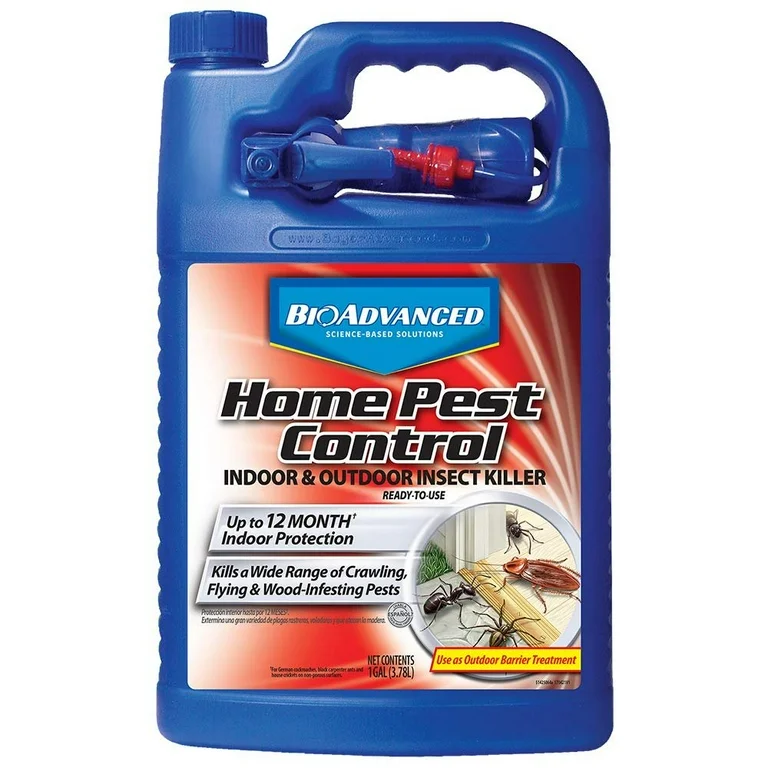Expert A1 Charlotte Bed Bug Exterminator - High Quality Solution Guaranteed
Expert A1 Charlotte Bed Bug Exterminator - High Quality Solution Guaranteed
Blog Article
Bed Pest Treatment Failure: Comparing Chemical Vs. Non-Chemical Solutions
In the realm of pest control, particularly when dealing with the relentless concern of bed insects, the selection between chemical and non-chemical treatment remedies can be a pivotal one. Both techniques offer unique advantages and drawbacks, affecting variables such as efficiency, safety considerations, and total cost. By checking out the nuanced details of each approach, a more clear understanding of which course to go after in resolving a bed pest invasion can be attained.
Effectiveness of Chemical Treatments
Chemical therapies for bed pest problems have been extensively identified for their powerful and quick effectiveness in removing these bugs. When thinking about the efficiency of chemical treatments, it is vital to recognize that they can give a fast and complete solution to a bed insect problem.
Additionally, chemical therapies have the advantage of offering residual results, implying that they can continue to remove bed insects even after the initial application. This recurring activity is especially useful in combating any kind of potential re-infestations. In addition, the fast action of chemical treatments can bring alleviation to individuals facing extreme bed pest problems, permitting them to restore control of their living spaces promptly.
Safety And Security Worry About Chemical Solutions
One vital element that needs cautious consideration when using chemical solutions for bed insect treatment is ensuring the safety and security of occupants and the setting. Direct exposure to particular chemicals utilized in bed insect treatments can lead to breathing issues, skin irritability, or various other damaging reactions, especially in individuals with pre-existing conditions or sensitivities.
Moreover, the environmental influence of chemical options is an additional considerable factor to consider. Some pesticides made use of in bed pest therapies might be dangerous to advantageous insects, wildlife, and ecosystems if they leach right into the dirt or water systems. It is necessary to make use of chemical treatments judiciously, following safety standards, and taking into consideration much less poisonous alternatives to mitigate these dangers and make sure the reliable and risk-free management of bed insect problems.
Benefits of Non-Chemical Approaches
Taking into consideration the prospective safety issues and environmental influence associated with chemical remedies for bed bug treatment, exploring non-chemical strategies provides a promising choice with several unique benefits. Non-chemical methods use a more secure alternative for households, specifically those with family pets, children, or people conscious harsh chemicals. These approaches get rid of the threats of exposure to harmful substances, minimizing the possibility for unfavorable wellness results. Furthermore, non-chemical treatments are eco friendly, as they do not add to air or water air pollution, making them a sustainable selection for pest control.
Furthermore, non-chemical remedies can be efficient in targeting bed bugs, consisting of hard-to-reach click to investigate areas where chemical therapies may not penetrate - A1 exterminators charlotte nc. Techniques such as warm treatment, vacuuming, vapor cleansing, and bed mattress encasements supply thorough elimination without the usage of harmful chemicals.
Limitations of Non-Chemical Treatments

Additionally, non-chemical treatments often call for multiple applications to achieve successful eradication. This can be lengthy and may not constantly assure full removal of all bed bugs and their eggs, especially in surprise or hard-to-reach areas.
Furthermore, the success of non-chemical therapies greatly depends on correct application and thoroughness, which can be testing for individuals without professional experience. Inadequate application of non-chemical methods may lead to incomplete elimination, bring about consistent problems and the need for extra therapies.
Consequently, while non-chemical treatments have their advantages, it is important to acknowledge these constraints and consider them when determining the most effective approach for managing bed bug invasions.
Expense Comparison: Chemical Vs. Non-Chemical Options
Provided the limitations associated with non-chemical therapies, a necessary element to examine in the context of bed insect monitoring is the price comparison in between chemical and non-chemical choices. Chemical treatments generally involve the application of pesticides by specialists, which can vary from $250 to $900 per area, relying on the intensity of the invasion and the size of the location to be dealt with. On the other hand, non-chemical treatments like warmth therapy or heavy steam can be much more costly, with expenses ranging from $1,000 to $6,000 for a whole home. While the preliminary price of chemical treatments might appear lower, multiple therapies may be required to totally remove the invasion, potentially raising the general cost. On the other hand, non-chemical alternatives might provide a more environmentally friendly and lasting solution, although they can be cost-prohibitive for some people. Inevitably, when thinking about the cost of bed pest therapy alternatives, it is essential to evaluate the ahead of time costs against the performance and long-lasting sustainability of the chosen method.
Final Thought

Thinking about the possible safety and security worries and ecological influence connected with chemical services for bed insect therapy, checking out non-chemical methods provides a promising choice with a number of unique benefits.Given the restrictions linked with non-chemical treatments, a vital aspect to assess in the context of bed pest administration is the expense comparison between chemical and non-chemical choices. In comparison, non-chemical treatments like warmth treatment or vapor can be much more costly, with costs ranging from $1,000 to $6,000 for a whole home. While the first expense of chemical therapies may appear lower, numerous treatments might be required to totally get rid of the problem, potentially raising the overall price.In final thought, when contrasting chemical and non-chemical bed pest therapy options, it is crucial to think about efficiency, safety, advantages, limitations, and cost.
Report this page